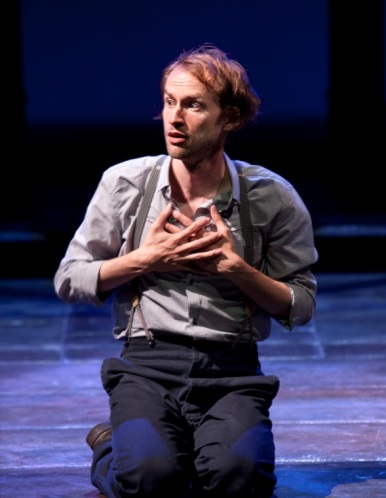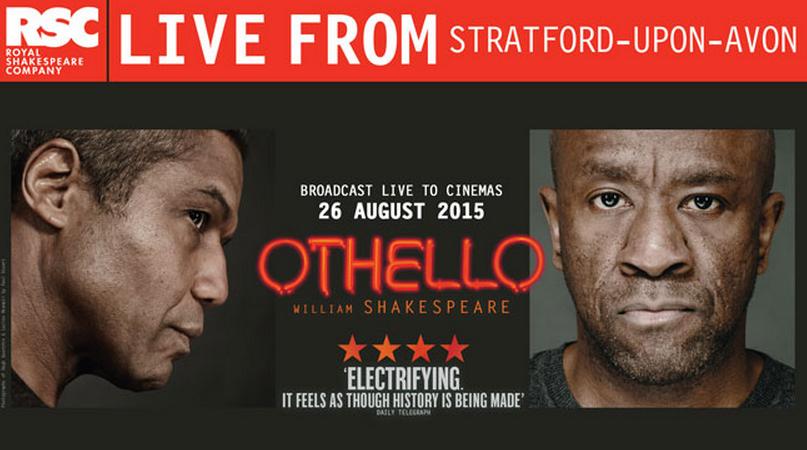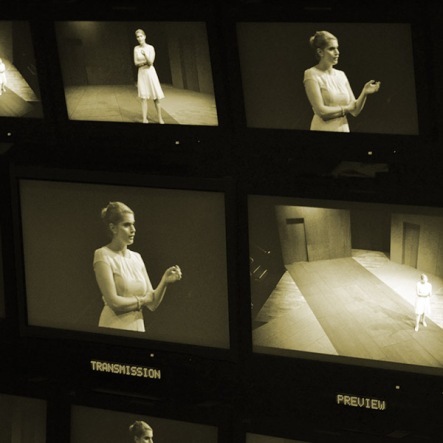I’ve been thinking about attention this week. Not the kind that other people give to you, but the kind you create yourself. Focus. Concentration. Absorption. Immersion.
I’ve been thinking about it because sustained, unbroken attention is something that doesn’t always come naturally to me, especially when I find myself sitting in the darkness of a theatre after a long day’s work.
This is ironic – and embarrassing – for a Shakespeare scholar to admit. In years past, when I counted myself more a cultural historian and literary critic, I could just about get away with it; theatre was great, but it wasn’t my bread and butter, so it was almost okay if I secretly spaced out or even nodded off for a bit every now and then.
But now that I’m putting theatre at the heart of my next research project, I’m feeling a little more self-aware. And intrigued. To a certain extent I’ve started training myself to be more alert, to see going to theatre more as work (in a good way — usually). At the same time, a significant proportion of the theatre I’m watching is by online streaming, meaning that several of my ‘nights at the theatre’ are actually me, sitting on my bed with headphones, looking at a screen.
This, I’m finding, proves a particularly formidable challenge for someone prone to breaking focus. With no audience around me to enforce a sense of shared theatre etiquette, a number of new and previously impossible styles of theatre-watching start to emerge. Turning to Twitter occasionally to see what other audience members are saying. Multi-tasking to save time and energy on tired evenings – eating dinner while I watch, maybe even making it. Petting the cat when he climbs on my lap, curious what I’m up to. Saying a quick hello to my husband when he comes in from work. And, if the streaming is on-demand rather than live, pausing every now and then to take a break, or maybe even watching the production over a couple of days in chunks.
Although I’m a little embarrassed to fess up to these practices, I know I’m not alone. I’m not the only one on Twitter after all. Which is why it was all the more surprising, and challenging, and interesting, when online audiences were invited last week by Complicite’s Simon McBurney to turn off our phones.
The show we had tuned in to see was a live performance of The Encounter, streamed online courtesy of Complicite and The Space from the sold-out Barbican Theatre in London (and available on YouTube until the end of today here). This one-man show tells the story of a National Geographic photographer’s journey into the Brazilian rain forest, and his consciousness-bending experiences while there. It is told through the use of immersive, ‘binaural’ sound technology, with all members of the audience – in-person and online – wearing headphones throughout the entire performance.

McBurney started casually, shuffling along the stage and then addressing the audience in his khaki shirt, baseball cap, and jeans. ‘Ladies and gents, um, we’re just still waiting for some people to come in, apparently the bars are more attractive than the theatre. If you could please, while we’re waiting, turn these off [holds up mobile phone]. Tonight is a livestream, so I suggest anybody at home, who’s watching this also turns these off.’ And I did. No live tweeting during the production, no stopping and starting (not really possible in this case), and once things got going I even turned out all the lights. I did still eat dinner while watching it, but I was lucky enough not to have to cook it.
I don’t know if this single focus made the experience better or worse or the same. Though I won’t go into the details here of the production itself, I should say that it was genuinely extraordinary, and I certainly didn’t feel limited or kept at a distance during my encounter with The Encounter. At the same time, I still experienced plenty of moments of mental interruption, not least as I got to thinking about my own sense of sustained attention and what helps and hinders it. But I did really benefit from the challenge of trying to pay attention to a streamed performance at home in a way that was similar to how I might do so in a theatre. I did my best to perform a social code, even when no one was checking up on me (aside from my fellow audience members on Twitter).
So all this was in my head when I made my way down to London for another theatre event at the Barbican last weekend: Forced Entertainment’s Table Top Shakespeare. This series of 36, one-hour productions saw six actors taking turns as they told the story of each of Shakespeare’s plays using a box of household objects. Beatrice as a bottle of sunscreen, Claudius as a container of flea powder, Hector as a jar of Tabasco sauce, Cleopatra as an old china dish. Look below to see Birnam Wood coming to Dunsinane.

I went down to London to see four of these experiments in storytelling live and in-person, after watching about the same number online last summer when they were broadcast live from the Berliner Festspielen. I remember seeing snippets of a few one day during the work week, then hearing more from a friend a few days later, and finally settling down outside on a sunny, late Saturday afternoon to watch A Midsummer Night’s Dream. While I watched, I took notes – not on paper, as I normally would in the theatre, but published online through Twitter, where I also looked out for the comments of others. A couple of examples:
‘…and Oberon kind of agrees…’ – lovely bits of editorialising in @ForcedEnts #completeworks , strangely evocative of Lambs’ Tales
— Erin Sullivan (@_erinsullivan_) July 3, 2015
The faerie spirits – nice touch #completeworks pic.twitter.com/YAbwRQAHmt
— Erin Sullivan (@_erinsullivan_) July 3, 2015
Close to a year later, I’m left wondering what kind of theatrical experience that was. I know for a fact that I was doing lots of other things while watching, though I do think that I was also paying attention, and really focusing, while navigating my way around those other things. And speaking with others online during the performance did, in some ways, make certain moments and insights more memorable for me.
Being physically present, down in the depths of the Barbican Pit on Saturday was a materially more immersive experience, and I did feel like the co-presence of the somewhat surprisingly packed audience around me did focus my mind and senses in ways that I missed last summer. But I’m not going to lie – in hour 3 I moved to a cooler seat at the edge, and I let my mind wander and even drift off for a few drowsy minutes. This had everything to do with stamina rather than interest. And I don’t know what this all adds up to, other than a growing preoccupation with how I watch theatre – whether in an auditorium, a cinema, or at home, sitting on my bed.
How do these different practices affect my appreciation of what’s before me, and my absorption in it? Do we need to develop a shared protocol for at-home viewings if we want streamed theatre to achieve a certain kind of emotional and sensory effect? Should we turn our phones off, or are they doing something new and helpful for us that we should embrace rather than shun? There are over 1,000 comments on the YouTube page for The Encounter, and despite McBurney’s plea I’m sure that a good portion of them bear a time-stamp from the night of the livestream. Is this a sign of our ever distracted, ever fragmented times, or a mark of a new and maybe even enhanced way of watching theatre, or perhaps some combination of both?
































